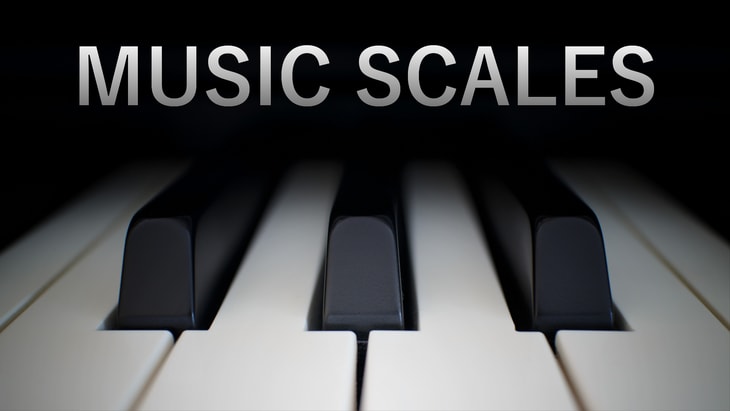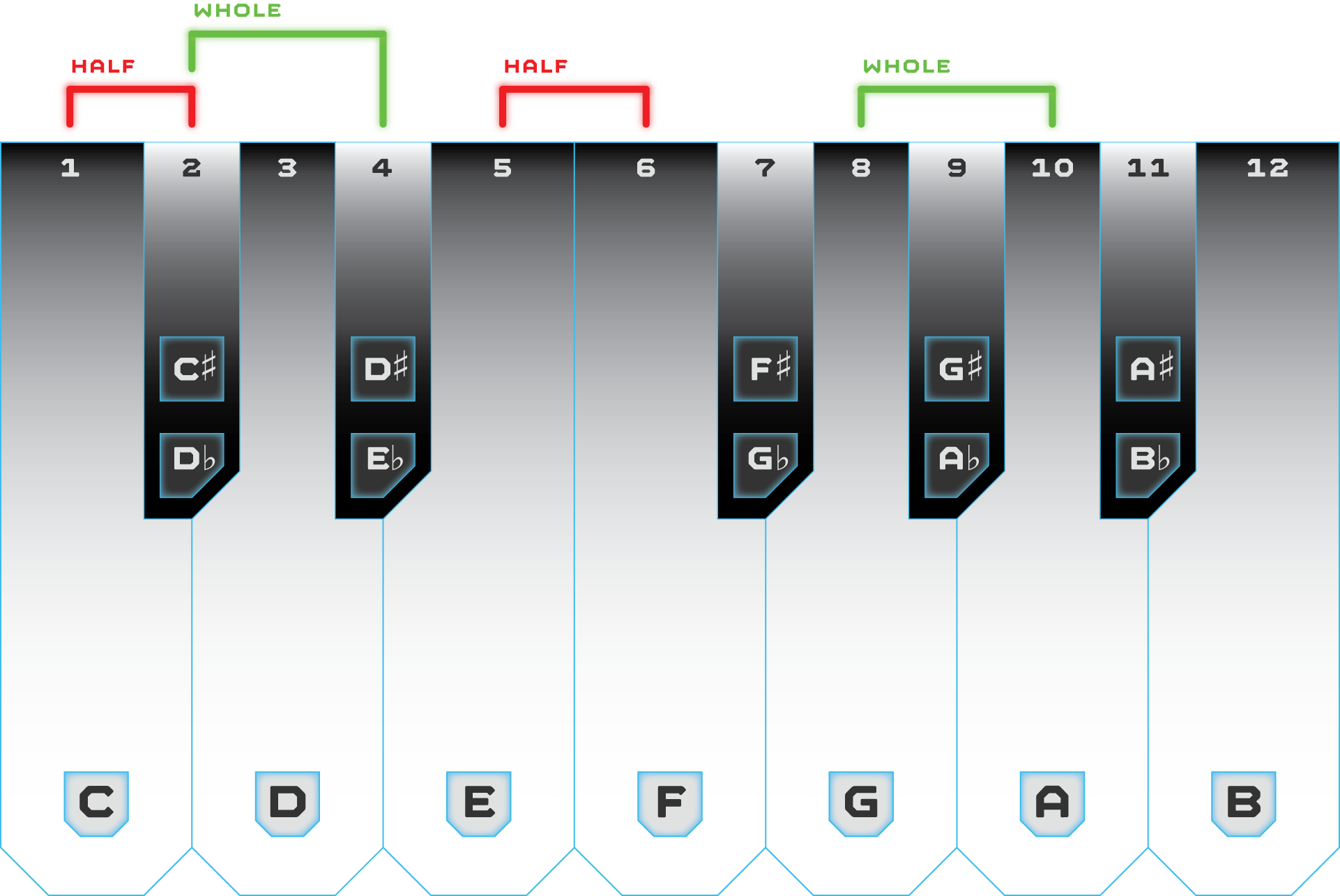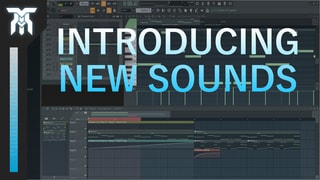Share!
What Are Musical Scales

What are musical scales? Glad you asked! This post will go over concepts focused on piano scales but should work on other instruments if you know your fingerings and where the pitches are. Here’s an outline of what you will learn about musical scales in this tutorial:
- What a musical scale is
- Major and Minor scales
- How to write a scale
- Different types of scales
- Different scale modes
Read through until the end, there are some free music composition resources you can find throughout this post to help you write your own music scales. You’ll find the circle of fifths and a list of piano scales in major, minor and even their pentatonic versions.
What Is A Scale In Music?
Scales in music theory will be generally the same no matter what instrument you play. There is, of course, a difference in how you play it across different instruments.
What a scale in music consists of is a series of notes ordered by pitch, all within one octave. (Every time a note repeats on the keyboard is a new octave.)
Essentially, a scale will guide you to use notes that sound well together.
A scale will have different notes depending on what type of scale you use. This can be 7 notes in the case of Heptatonic scales, and 5 notes in Pentatonic scales. The notes in a scale are determined by the key you chose and whether or not it’s a Minor or Major scale.
- Key: A note chosen to build a scale upon. This will be the first note in a scale.
- Tonic: The lowest note (or the first note) of a given scale. (commonly mistaken as the root note.)
- Scale: A collection of notes/pitches in a specific order.
- Mode: A melody type added to a scale. (An alternative way of using a scale.)
To clear things up, the key, tonic, and scale only have a specific order on paper. When writing your music, you can start with any note, in any order, and have notes lower than the tonic (like when using lower octaves).
Sharp (♯): A sharp defines a note that is one semitone/half-step higher than the given note. For example; C♯ is the black piano key to the immediate right of C.
Flat (♭): A flat defines a note that is one semitone/half-step lower than the given note. For example; D♭ is the black piano key to the immediate left of D.
A sharp or a flat doesn’t necessarily have to be a black piano key either and you can even get into double-sharps. But, for the sake of this tutorial, the basic outline of sharps and flats will be enough.
Another thing to mention is that a flat and sharp note can be the same key on a piano. For example; C♯ and D♭ are the exact same note, it’s just a different way of saying it.
The main reason why you would want to learn about musical scales and use them is that it will make your music sound better for the most part. By using a musical scale, you can be guided to use notes that will complement each other and not sound unpleasant or out of place.
Whatever scale you choose, the notes don't have to be played in the order they appear in the scale and you can always play notes outside of the scale you are using. Just use it as a guide, not a limit to your creativity.
Music Scale Examples
For example, you may hear something like; C Major or even Pentatonic F♯ Minor.
C Major: In this case, C is the key (or the tonic) and Major is the kind of scale used. Together, they form the C Major Scale. A scale and key without anything else are almost always going to be a Heptatonic Scale (which just means 7 notes/pitches).

Pentatonic F♯ Minor: In this example, the scale starts with the key “F sharp” and uses a variation of the minor scale known as “Pentatonic Minor”. Because of this being minor, the scale will be almost the same as the natural (or Heptatonic) minor, except without 2 of the pitches in the scale.

Don’t worry, all of this will be explained as you continue reading.
How To Write Music Scales
There is an easy method for writing different kinds of music scales, and really, it can be considered a formula. This way of writing scales is referred to as the interval sequence.
This is the pattern of whole-steps and half-steps iterated through.
Half-Step / Semitone (H): One note/pitch either up or down (including white and black notes).
Whole-Step (W): Two notes/pitches either up or down (including white and black notes).
Both major and minor scales start with a whole step.
Using this, you simply start on the key (tonic) of the scale and count one whole step to the next note/pitch in the scale.
After that, you take a step (whole or half, whether it’s major or minor) from the note you’re on to find the next one in the scale.

Some general guidelines on what your scale should consist of:
- Should exclusively use either sharps or flats when applicable.
- Should contain exactly one instance of A through G (including sharps/flats).
Major Vs. Minor Scales
When it comes to a major scale vs a minor scale, it really depends on the style of music you’re going for. Both major and minor scales start with a whole step.
Here is a list of natural major scales you can refer to when writing music.
Here is a list of natural minor scales you can refer to when writing music.
Different Types of Scales In Music
There are many different types of scales in music and even more if you get into Modes. Long story short, there are A LOT of different musical scales.
For this article, let’s just stick to the most commonly used to give you a good place to start. Each can have Major and Minor versions but can consist of different notes and even different numbers of notes in the scale.
What are the different types of scales in music? These can range from one note scales (Monotonic) and up to 12 note scales (Chromatic).
Some types include:
- Pentatonic: 5 notes/pitches - Common in folk/oriental music.
- Hexatonic: 6 notes/pitches - Common in western folk music.
- Heptatonic: 7 notes/pitches - Common in modern western music.
- Octatonic: 8 notes/pitches - Common in Jazz/modern classical music.
Heptatonic Scale
The heptatonic scale consists of 7 notes and is the most common type used in western music. These can also be referred to as Natural Scales, such as Natural C Minor, or Natural F♯ Major.
The heptatonic scale is a great type to start with as a beginner and even to use as a pro.
Heptatonic Major Scales have a key signature of W-W-H-W-W-W-H
Heptatonic Minor Scales have a key signature of W-H-W-W-H-W-W
Pentatonic Scale
A Pentatonic scale is made by removing 2 notes from the Heptatonic version, leaving the scale with 5 notes, hence “Penta”. The two notes to be removed varies between major and minor.
Pentatonic Major Scales omit the 4th and the 7th note from the Heptatonic Major Scale.
Pentatonic Minor Scales omit the 2nd and the 6th note from the Heptatonic Minor Scale.
Modes In Music Theory
As mentioned before, a mode is a set of melodic characteristics you can apply to a musical scale. Due to how complex of a topic this is, this post will simply outline what they are.
Here are modern modes in music theory with their interval sequence:
More on the interval sequence in the “How To Write Music Scales” section above.
Ionian: This mode is essentially the natural major scale.
Interval sequence: W-W-H-W-W-W-H
Dorian: Natural minor scale with the 6th pitch being different.
Interval sequence: W-H-W-W-W-H-W
Phrygian: Natural minor scale with the 2nd pitch being different.
Interval sequence: H-W-W-W-H-W-W
Lydian: Natural major scale with the 4th pitch being different.
Interval sequence: W-W-W-H-W-W-H
Mixolydian: Natural major scale with the 7th pitch being different.
Interval sequence: W-W-H-W-W-H-W
Aeolian: This mode is essentially the natural minor scale.
Interval sequence: W-H-W-W-H-W-W
Locrian: The only mode with the 5th pitch being diminished.
Interval sequence: H-W-W-H-W-W-W
You can also use the circle of fifths to arrange modes.
Thanks for reading through this article on music theory scales. If you’d like to reference different major and minor scales or look at the circle of fifths, you can use this music composition resource to help write scales and chords.
It would mean a lot to spread the word on this guide through musical scales so please, share this with those you think would really enjoy it. Take care!
Featured Post
More Composition Tutorials
Share!
Join the newsletter for free stuff and some knowledge too!
Everything you need. No Spam. A heads up before others do.











